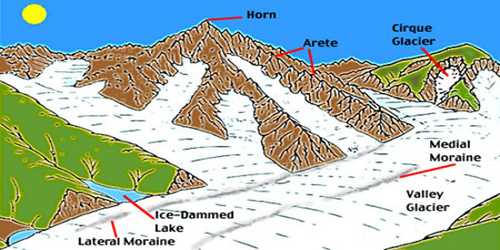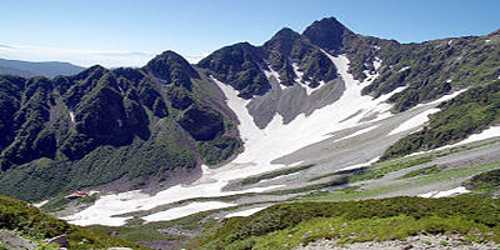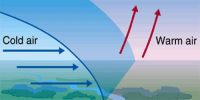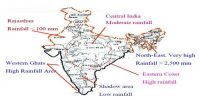Cirque: Erosional Landforms
Cirques are the most common of landforms in glaciated mountains. The glacial cirque is opened on the downhill side while the cupped section is steep. The cirques quite often are found at the heads of glacial valleys. The accumulated ice cuts these cirques while moving down the mountain tops. They are deep, long and wide troughs or basins with very steep concave to vertically dropping high walls at its head as well as sides. A lake of water can be seen quite often within the cirques after the glacier disappears. Such lakes are called cirque or tarn lakes. There can be two or more cirques one leading into another down below in a stepped sequence.

A Cirque experiences larger erosion because of the associated rock burdens which may also over intensify the level of a cirque. Cirques subjected to seasonal melting often form little lakes called tarns behind the Moraine. An example of Cirque formed through fluvial erosion is found on the Reunion Island and include the tallest volcanic structure in the Indian Ocean.














